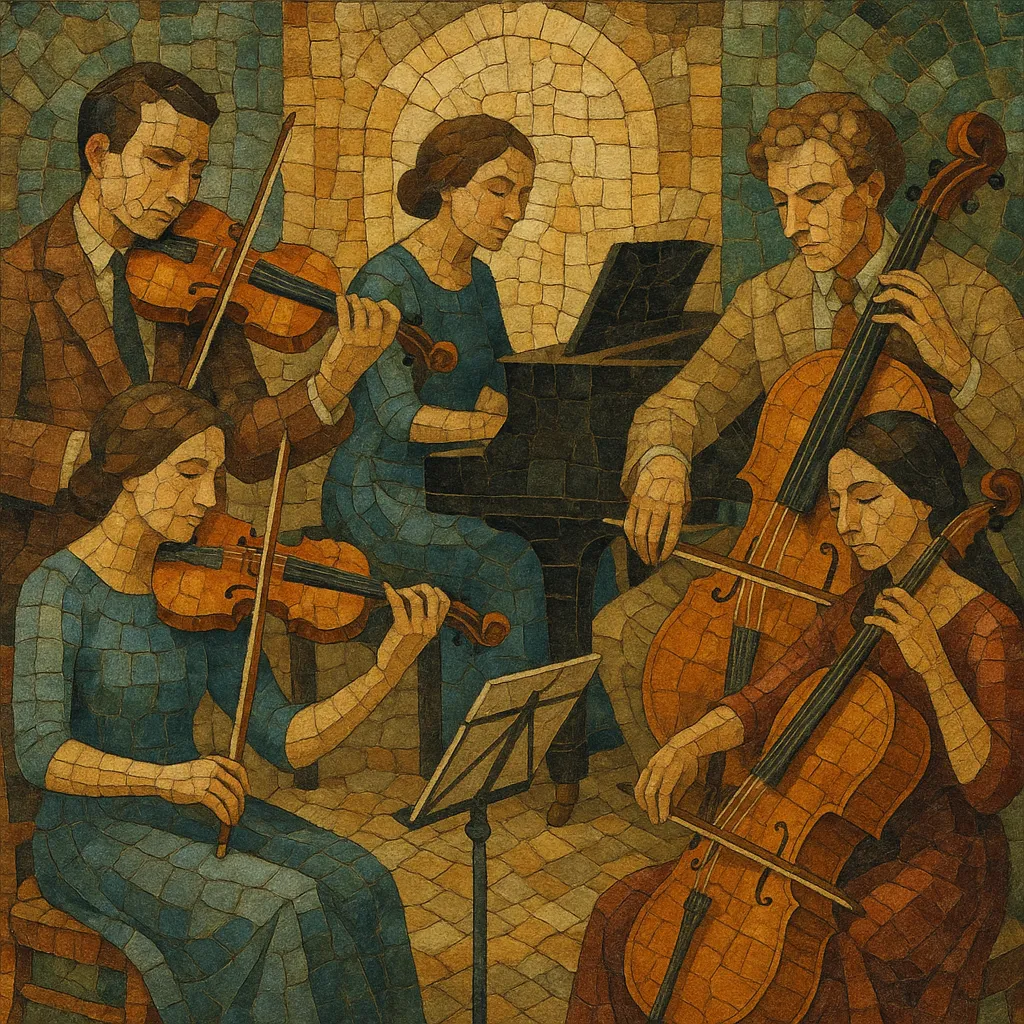Chamber music is a tradition of composed music for small ensembles—typically one player per part—intended for intimate spaces such as courts, salons, and private rooms rather than large public halls.
Its aesthetic emphasizes clarity of texture, conversational interplay among parts, and balance without a conductor. Hallmark formations include the string quartet, piano trio, wind quintet, string quintet, and various mixed ensembles. Multi‑movement cycles (often in sonata form) and finely wrought counterpoint are common, ranging from Baroque trio sonatas to Classical string quartets and modern works with expanded timbres and techniques.
Because of its scale and transparency, chamber music has long been a proving ground for compositional craft and ensemble musicianship, shaping the core of Western art music from the Baroque through the present.
The roots of chamber music lie in the late Renaissance and early Baroque, when consort music and courtly dances evolved into more idiomatic, small‑ensemble works. In Italy, the idea of musica da camera (music for the chamber) contrasted with musica da chiesa (church music). The Baroque era solidified the genre through forms like the trio sonata—exemplified by Corelli and his followers—where two treble lines and basso continuo engaged in dialogue.
The Classical period elevated chamber music to a central role. Joseph Haydn crystallized the string quartet’s four‑movement design and conversational equality among parts; Mozart deepened the idiom’s lyricism and harmonic sophistication; Beethoven expanded scale, drama, and formal innovation, especially in his middle and late quartets. Chamber music flourished in Viennese salons and private societies, becoming a cornerstone of domestic and professional music‑making.
Composers such as Schubert, Mendelssohn, Schumann, Brahms, Dvořák, and Tchaikovsky enriched the repertoire with expansive melodies, richer harmony, and national color, while maintaining intimate textures. New formations (piano quintet, string sextet) and cyclic integration of movements became common.
Modernists reimagined the idiom: Debussy and Ravel introduced impressionistic color; Schoenberg and the Second Viennese School explored atonality and twelve‑tone writing; Bartók and Shostakovich fused folk materials, rhythmic drive, and modern harmony. Post‑war and contemporary composers broadened techniques (extended timbres, spectral and minimalist processes, prepared piano, new notations). Professional ensembles (e.g., the Juilliard, Emerson, and Kronos quartets) and vibrant commissioning ecosystems keep the genre at the forefront of contemporary classical creation.
Choose a small group with one player per part: string quartet (2 violins, viola, cello), piano trio (violin, cello, piano), wind quintet, or a mixed ensemble. Write idiomatically—capitalize on open strings for strings, breath phrasing for winds, and clear voicing for piano.
Aim for conversational writing. Distribute motives among parts so each voice contributes meaningfully. Use imitation, invertible counterpoint, and canonic entries to create dialogue while keeping lines singable and playable.
Common plans include sonata form for first movements, a lyrical slow movement, a minuet/scherzo, and a lively finale (rondo or sonata‑rondo). Theme‑and‑variations and fugue can provide contrast. Ensure structural clarity through cadence placement, modulation plans, and motivic development.
Functional tonality is traditional; modal mixture, chromaticism, and (in modern idioms) quartal harmony, pandiatonicism, or atonality are viable. Keep vertical clarity so inner voices remain audible. Exploit registral spacing to avoid muddy textures.
Craft interplay with rhythmic motifs, hemiolas, and metric shifts, but ensure ensemble coordination. Detail articulation (bowings, tonguing) and dynamics to shape phrases. Balance is crucial: thin the accompaniment when delivering key material, and exchange foreground/background roles smoothly.


